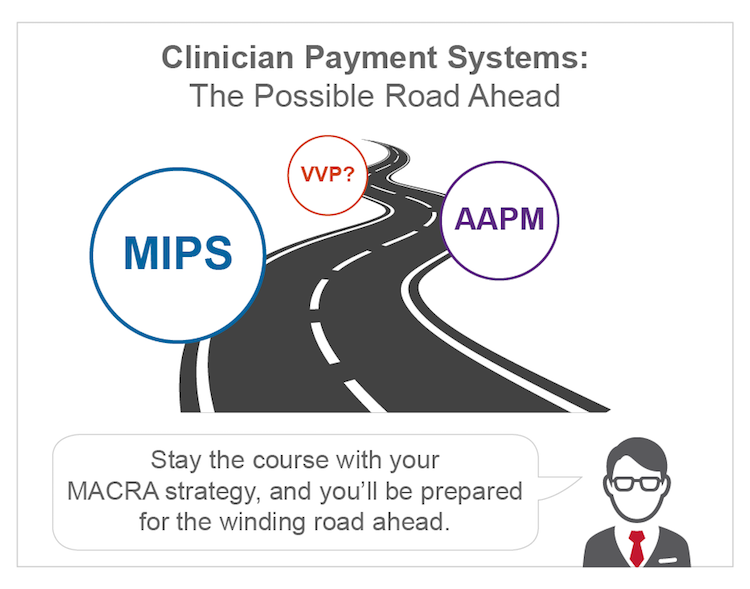Congress should repeal MIPS and replace it with a new Voluntary Value Program (VVP), according to a report released recently by the Medicare Payment Advisory Commission (MedPAC), the independent advisory agency tasked with making recommendations on Medicare policy.
In its March 2018 Report to the Congress, MedPAC put forth its recommendations to Congress on changes to MACRA that included eliminating the Merit-based Incentive Payment System (MIPS).
When it became law in 2015, MACRA created two new payment tracks for clinicians—MIPS and advanced alternative payment models (AAPMs), which provide an incentive payment for qualifying participants. After studying MACRA for the past two years, MedPAC generally supports the AAPM track, but it finds the MIPS track “profoundly flawed.” We have reported on MedPAC’s recent public meetings that dealt with this subject, culminating in its March Report.
Whether and when Congress might act on the recommendation, only time will tell. History has shown that, when MedPAC beats a certain drum for long enough, Congress tends to pay attention. However, even if Congress agrees to the recommendation, passing legislation and issuing regulations to implement a replacement would take some time.
The bottom line: Stay the course on your organization’s MACRA strategy, including MIPS reporting requirements, where applicable. Of course, in the long-term, that MACRA strategy should move your organization beyond MIPS by allowing the successful transition to AAPMs.

The Problems With MIPS
As MedPAC states, “MIPS is fundamentally incompatible with the goals of a beneficiary-focused approach to quality measurement,” something that MedPAC believes cannot be fixed.
Some of the weaknesses identified by MedPAC include the following:
- MIPS repeats the flaws of earlier value-based purchasing programs, which were not successful in improving patient outcomes and substantially improving care processes.
- It will be neither equitable nor comparable because reporting measures are chosen by clinicians and will result in comparison using different measures.
- More than half of clinicians will not be evaluated because they will not have enough cases for reliable scoring.
- It is overly burdensome and complex.
Because of these flaws, the program will not achieve its goals of helping clinicians change their practice patterns and embrace downside risk, helping Medicare beneficiaries choose clinicians, or helping the Medicare program reward clinicians based on value.
Congress has indicated that it tends to agree that MIPS is deeply flawed. The Bipartisan Budget Act of 2018 included several provisions that essentially tap the brakes on MIPS implementation.
MedPAC’s Proposed Alternative
To replace MIPS, MedPAC recommends a new clinician value-based purchasing program that accomplishes the following:
- Encourages coordination across providers and time;
- Promotes delivery system change;
- Includes population-based measures;
- Contains rewards based on clear, absolute and prospectively established targets; and
- Reduces administrative burden for clinicians.
MedPAC recommends, as an illustrative policy, a new Voluntary Value Program (VVP) that would permit clinicians to self-organize into groups that collectively assume responsibility for patient outcomes.
The VVP would evaluate all clinicians on the same set of measures: clinical quality, patient experience, and value. The design of the VVP would promote alignment with other value-based purchasing programs in Medicare, and it would provide clinicians with a means to prepare for participation in AAPMs. The voluntary program would award smaller financial incentives than those possible in AAPMs, with the intent of motivating clinicians to move as quickly as possible to downside-risk models.
Medicare would withhold a portion of all clinicians’ payments to fund a pool of potential value-based payments. For illustrative purposes, MedPAC used the example of 2 percent, but the actual size and rate of change of the withhold would be a CMS policy decision. To accomplish the basic framework, clinicians could choose from among the following alternatives:
- Join a voluntary group to have their performance assessed at the voluntary group level;
- Join an AAPM and receive back their withhold; or
- Make no election and lose their withhold.
MedPAC commissioners see the VVP as a fairer incentive system, because it rewards participants in direct proportion to their effort. MIPS requires participants to meet certain volume thresholds before they qualify for payment adjustments—essentially penalizing practitioners who invest time and money to improve the value of care, but who still fall short of the MIPS thresholds.
Stay the Course
These are important policy recommendations that have the potential to affect all clinicians not already in AAPMs; therefore, these recommendations necessitate close monitoring. HORNE’s Payment Model Reform Team will continue to watch for and report on key developments.
However, if Congress does act on MedPAC’s recommendations, it could take years to pass laws and enact regulations. In the meantime, MACRA is still law of the land, and clinicians are wise to take advantage of any available financial upside of MIPS by fully reporting required data. With CMS and Congress slowing implementation and increasing the flexibility of the program, even small efforts toward compliance will be rewarded.
In the long-term, every healthcare provider needs to begin or continue changing the organizational mindset to embrace value-based care. As a practical matter, look for ways to defray some of your MACRA readiness costs at the same time. For example, as of January 1, 2017, CMS began paying for chronic care management services. The CCM and Complex CCM codes provide an immediate financial shot in the arm while also positioning your hospital or practice to improve its MIPS scores and prepare for participation in an AAPM.
For weekly insights into healthcare, please sign up here:




Leave A Comment